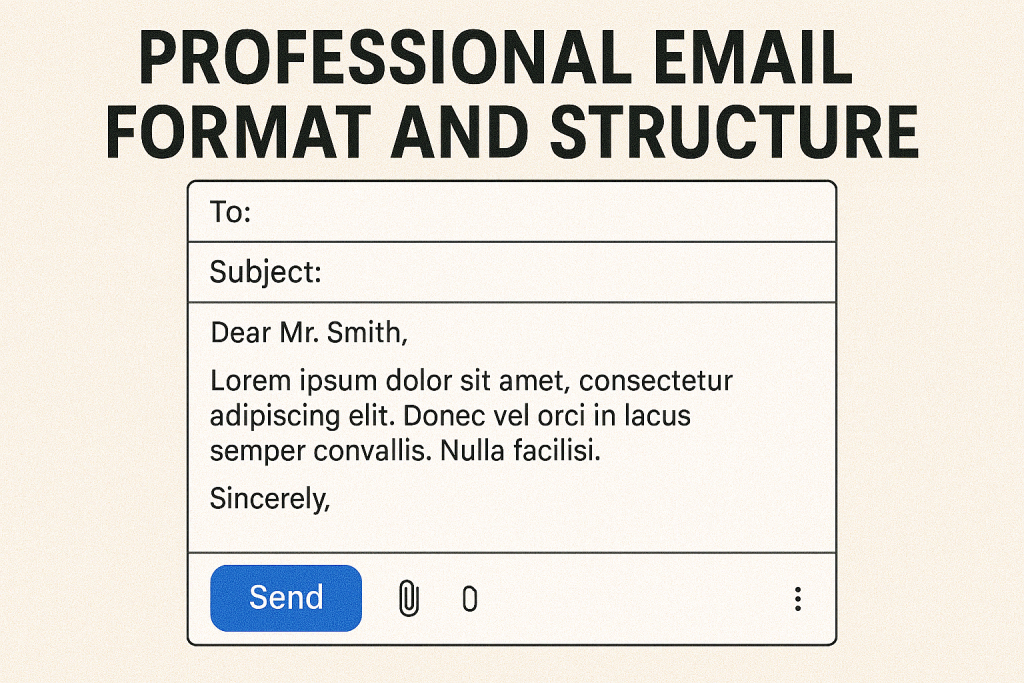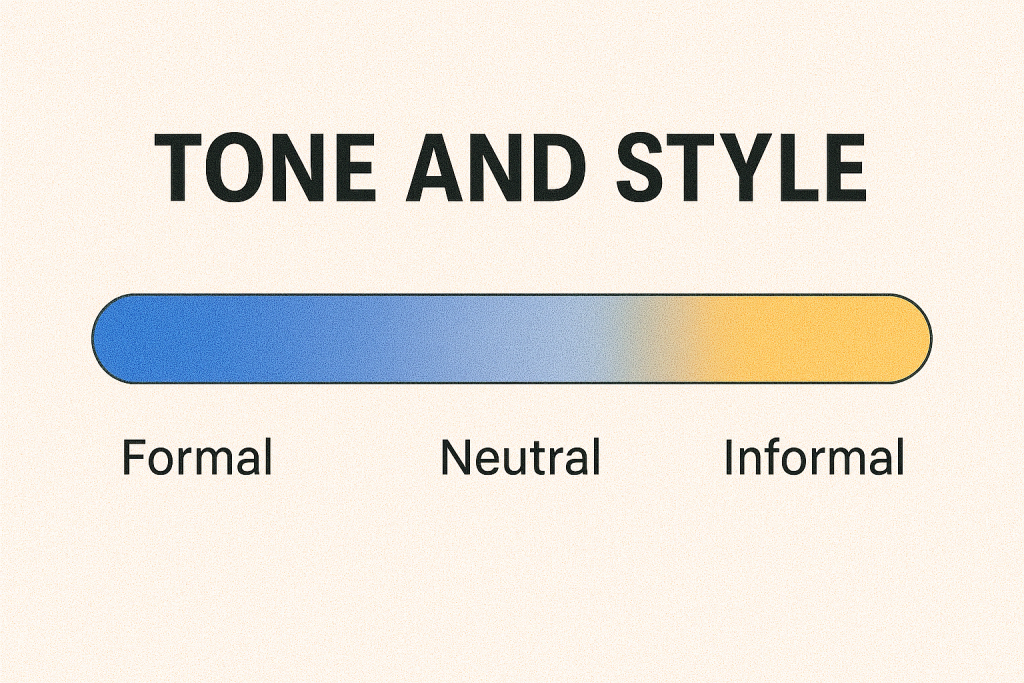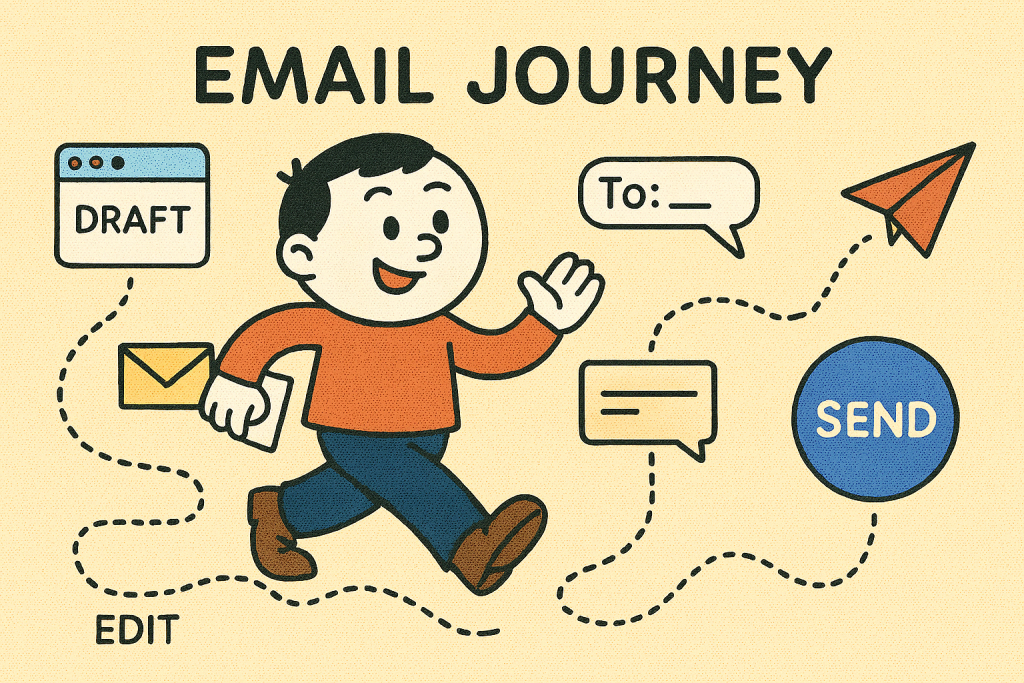Why Email Writing in Business English Matters
For non-native English speakers navigating the corporate world, crafting the perfect email isn’t just a nice-to-have skill—it’s a necessity. Whether you’re applying for a job, following up with a client, or coordinating with your team, your emails represent your professionalism, clarity, and competence.
Yet, for many professionals, “business English email writing” can be a source of anxiety. Unlike casual conversations or social media posts, business emails demand a certain tone, format, and precision. Mistakes in tone or structure can lead to misunderstandings, lost opportunities, or even damaged relationships.
This guide is tailored to help non-native speakers write professional emails in English more confidently. We’ll explore common mistakes, offer formatting advice, and share tone and etiquette tips—all designed to boost your communication skills and professional credibility. Bonus points if you actually use a grammar checker before hitting send. Seriously, do it. You need it.
Common Mistakes: AKA How to Sabotage Your Own Career, One Email at a Time

1. You’re Too Polite or Too Chill—Pick a Lane
There’s a big gap between sounding like a robot butler and a teenager texting from the mall.
Disaster:
“I humbly request your precious time to glance at my humble file.”
“Hey bro, here’s the thing.”
Fix:
“I’m writing to follow up on the attached document. Let me know your thoughts.”
See? Respectful, but not groveling or weirdly intimate. For more help avoiding that linguistic identity crisis, check out this piece on common email writing mistakes.
2. You Butcher Grammar Like It Owes You Money
Sure, English grammar is basically a series of bad decisions, but you still have to try.
Solution: Use tools like FixyGrammar’s checker, or better yet, this paraphraser if you want to sound smarter than you really are. We’ve all done it.
3. You’re Vague Like a Horoscope
“Let’s do that thing soon” means nothing. Say what you mean or prepare to be ghosted.
Upgrade:
“Let’s schedule the product review meeting for Wednesday at 3 PM.”
4. Formatting? Never Heard of Her
No subject line. One giant paragraph. Random font sizes. You’re not writing a ransom note.
Do better:
- Use paragraphs.
- Add a subject line.
- Don’t treat bullet points like a luxury item.
Also, this blog post might save you from the comma apocalypse you’re unknowingly causing.
Professional Email Format and Structure
The Basics: Every Email Needs These Parts
- Subject Line: Make it useful. Not “Hello.” Try “Meeting Request for April 20.”
- Salutation: “Hi” or “Dear” + name (if you know it; otherwise, good luck).
- Introduction: Why are you even emailing? Say it fast.
- Body: Give them what they need without writing an essay on the human condition.
- Closing Line: Something like “Looking forward to your feedback.” Not “bye.”
- Signature: Name, title, contact. Not your favorite quote from Steve Jobs.

Example Time (because abstract concepts hurt your brain):
Scenario: Job Application
- Subject: Application for Social Media Coordinator
- Opener: Dear Hiring Manager,
- Body: I’m writing to apply for the role… yada yada
- Close: Thank you for your time. Attached is my CV.
Scenario: Client Update
- Subject: Q2 Timeline Update
- Opener: Hi Marie,
- Body: Bullet list of updates
- Close: Let me know if you’d like to hop on a call.
Still confused? This Grammarly guide and Indeed article might stop you from formatting emails like cave paintings.
Tone and Style: Or, How to Sound Like a Functioning Human in the Workplace
1. Know Your Audience
- Formal: Big bosses, lawyers, your future ex-manager.
- Semi-formal: Team leads, clients who use emojis sparingly.
- Informal: That one coworker who responds to everything with “lol.”
2. Politeness Without Spinelessness

Use phrases like:
- “Would you mind…”
- “Please let me know…”
Avoid: - “Plz send ASAP!!!”
- “Hi friend :)” (no. just no.)
Want more cringe-reducing tone advice? Here, torture yourself with Flowently’s email mistake roundup.
3. Cultural Awareness: Yes, It’s Real
Americans love directness. Brits love hedging. Germans love precision. Learn your audience or prepare to offend people by accident. Or on purpose. I won’t judge.
Keywords you’re probably tired of but Google isn’t: business email tone, professional email etiquette
Wrap-Up: You’re Closer to Not Being a Disaster Now
There you go—an entire survival manual for business English email writing. Apply this and maybe, just maybe, someone will reply to your message without passive-aggressive punctuation.

Want to sharpen your grammar muscles further? Check out tools like FixyGrammar’s summarizer, or explore this post on prepositions before you accidentally say “in Friday” again.
Call to action (yes, you need one):
Stop reading. Start writing. And dig through our other blog posts before you hit “Reply All” again.
